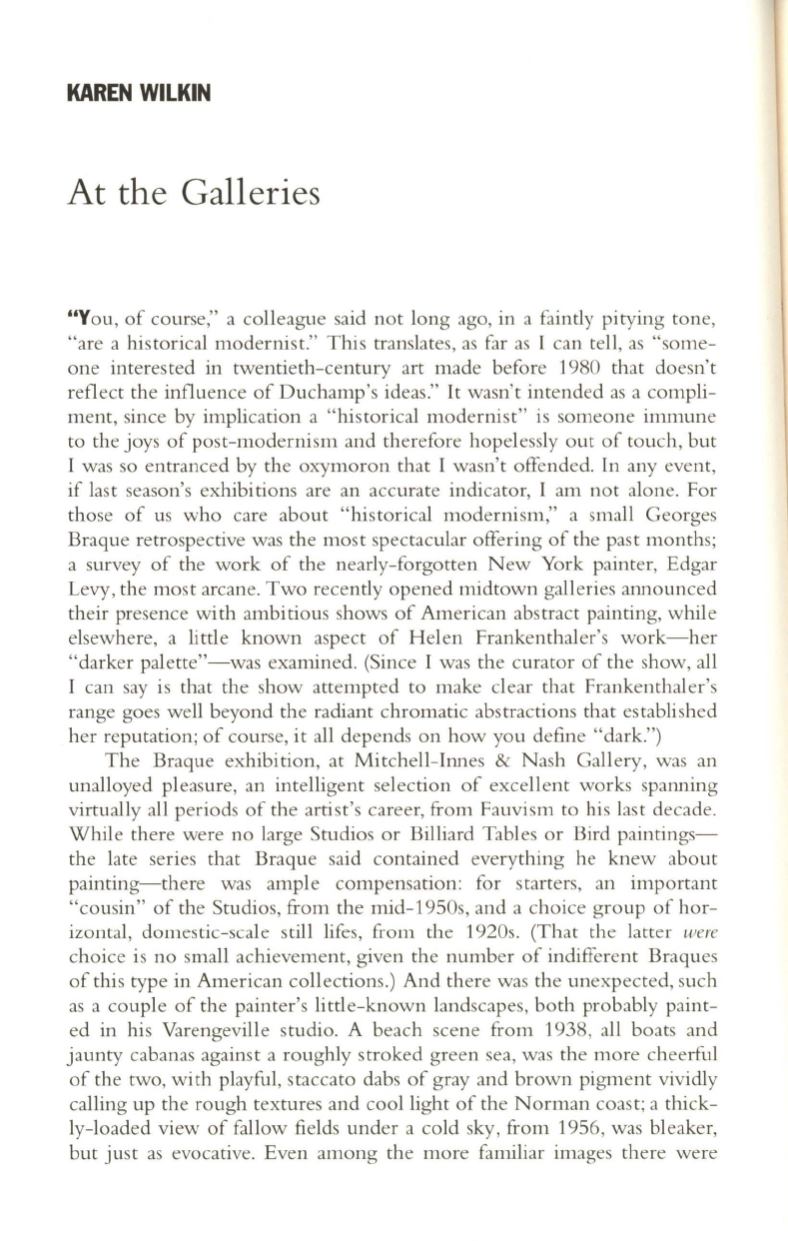
KAREN WILKIN
At the Gall eries
" You, of course," a colleague said not long ago, in a faintly pitying tone,
"are a historical modernist." This translates, as far as I can tell, as "some–
one interested in twentieth-century art made before 1980 that doesn't
reflect the influence of Duchamp's ideas." It wasn't intended as a compli–
ment, since by implication a "historical modernist" is someone immune
to the joys of post-modernism and therefore hopelessly out of touch, but
I was so entranced by the oxymoron that I wasn't offended. In any event,
if last season's exhibitions are an accurate indicator, I am not alone. For
those of us who care about "historical modernism," a small Georges
Braque retrospective was the most spectacular offering of the past months;
a survey of the work of the nearly-forgotten New York painter, Edgar
Levy, the most arcane. Two recently opened midtown galleries announced
their presence with ambitious shows of American abstract painting, while
elsewhere, a little known aspect of Helen Frankenthaler's work-her
"darker palette"-was examined. (Since I was the curator of the show, all
I can say is that the show attempted to make clear that Frankenthaler's
range goes well beyond the radiant chromatic abstractions that established
her reputation; of course, it all depends on how you define "dark.")
The Braque exhibition, at Mitchell-Innes
&
Nash Gallery, was an
unalloyed pleasure, an intelligent selection of excellent works spanning
virtually all periods of the artist's career, from Fauvism to his last decade.
While there were no large Studios or Billiard Tables or Bird paintings–
the late series that Braque said contained everything he knew about
painting-there was ample compensation: for starters, an important
"cousin" of the Studios, from the mid-1950s, and a choice group of hor–
izontal, domestic-scale still Iifes, from the 1920s. (That the latter
were
choice is no small achievement, given the number of indifferent Braques
of this type in American collections.) And there was the unexpected, such
as a couple of the painter's little-known landscapes, both probably paint–
ed in his Varengeville studio. A beach scene from 1938, all boats and
jaunty cabanas against a roughly stroked green sea, was the more cheerful
of the two, with playful, staccato dabs of gray and brown pigment vividly
calling up the rough textures and cool light of the Norman coast; a thick–
ly-loaded view of fallow fields under a cold sky, from 1956, was bleaker,
but just as evocative. Even among the more familiar images there were


